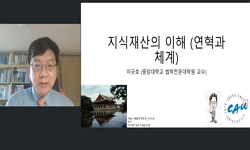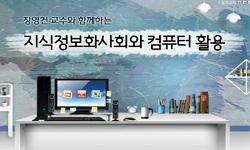This paper considers the characteristics of the modern Yomihon and discusses how Western literary thought was accepted at that time in Japanese literary world in the transition period from modern to modern. Then, analyze the theory of historical novel...
http://chineseinput.net/에서 pinyin(병음)방식으로 중국어를 변환할 수 있습니다.
변환된 중국어를 복사하여 사용하시면 됩니다.
- 中文 을 입력하시려면 zhongwen을 입력하시고 space를누르시면됩니다.
- 北京 을 입력하시려면 beijing을 입력하시고 space를 누르시면 됩니다.

『소설신수(小説神髄)』의 역사소설론 ―지식 수용의 관점으로 본 과도기적 특징을 중심으로― = The theory of historical novel in “Shosetsu Shinzui” ─Focusing on transitional features from the perspective of knowledge acceptance─
한글로보기https://www.riss.kr/link?id=A106013029
-
저자
홍성준 (단국대학교 일본연구소)
- 발행기관
- 학술지명
- 권호사항
-
발행연도
2019
-
작성언어
Korean
-
주제어
Shosetsu Shinzui ; historical novel ; knowledge ; Tsubouchi Shoyo ; Yomihon ; 소설신수 ; 역사소설 ; 지식 ; 쓰보우치 쇼요 ; 요미혼
-
등재정보
KCI등재
-
자료형태
학술저널
-
수록면
83-102(20쪽)
-
KCI 피인용횟수
0
- 제공처
- 소장기관
-
0
상세조회 -
0
다운로드
부가정보
다국어 초록 (Multilingual Abstract)
In the Meiji era, a view of literary pragmatism and a view of realistic literature of western were incorporated, and the Japanese literary world came to a state of confusion as to whether to inherit the flow of traditional folklore novels or to develop a novel genre that accepted western thought. This kind of collaboration between traditional culture and Western civilization through civilization can be regarded as one of the characteristics of literature at this time. Current historical novels can be said to be a developed form of readmen popular in modern period. In the early modern period, works that adapted white novels were published in the latter part of the early modern era, and a number of works were added that added fiction to historical facts. In the modern era, Western literary tendency became newly established, and had a major impact on the cultural community in general, including literary circles.
The transitional period in which the literary thought changed in the literary circle was in the early Meiji era, the “Shosetsu Shinzui” announced at this time played the role of leading change. “Shosetsu Shinzui” gave the opportunity to start the modern Japanese literature, regarding the novel as art. As this book shifts from early modern literature to modern literature, it can be said that it is a work that gives an impressive view on how literary knowledge of Western literature can be utilized in Japanese literature.
This paper considers the characteristics of the modern Yomihon and discusses how Western literary thought was accepted at that time in Japanese literary world in the transition period from modern to modern. Then, analyze the theory of historical novel which Tsubouchi Shoyo discussed in “Shosetsu Shinzui”, and understand the method and flow of the historical novel at the time.
In the Meiji era, a view of literary pragmatism and a view of realistic literature of western were incorporated, and the Japanese literary world came to a state of confusion as to whether to inherit the flow of traditional folklore novels or to develop a novel genre that accepted western thought. This kind of collaboration between traditional culture and Western civilization through civilization can be regarded as one of the characteristics of literature at this time. Current historical novels can be said to be a developed form of readmen popular in modern period. In the early modern period, works that adapted white novels were published in the latter part of the early modern era, and a number of works were added that added fiction to historical facts. In the modern era, Western literary tendency became newly established, and had a major impact on the cultural community in general, including literary circles.
The transitional period in which the literary thought changed in the literary circle was in the early Meiji era, the “Shosetsu Shinzui” announced at this time played the role of leading change. “Shosetsu Shinzui” gave the opportunity to start the modern Japanese literature, regarding the novel as art. As this book shifts from early modern literature to modern literature, it can be said that it is a work that gives an impressive view on how literary knowledge of Western literature can be utilized in Japanese literature.
국문 초록 (Abstract)
메이지시대에 들어서 서양의 실용주의 문학관과 사실주의 문학관이 들어오고, 일본문학계는 기존의 통속소설의 흐름을 이어받을 것인가, 아니면 서양의 사상을 받아들인 소설장르를 발전시킬 것인가로 혼란스러운 국면을 맞이하였다. 이러한 문명개화로 인한 전통문화와 서양문명의 충돌을 이 시기 문학의 특징 중 하나로 볼 수가 있다. 현대에 말하는 역사소설은 근세기에 유행한 요미혼이 발전한 형태라고 말할 수 있다. 근세전기에는 백화소설을 번안한 작품이 많았고, 근세후기에는 역사적 사실에 허구를 가미한 작품이 많이 나왔다. 그리고 근대에 접어들어 서양사조가 들어와 새로이 정착하면서 문학계를 비롯한 문화계 전반에 큰 영향을 미쳤다.
문학계에서 추구하는 문학사조가 변화하게 된 과도기적인 시기가 바로 메이지 초기라 할 수 있으며, 이 시기에 발표된 쓰보우치 쇼요(坪内逍遥, 1859-1935)의 평론집 『소설신수(小説神髄)』(1885년 간행)가 변화를 주도하는 역할을 하였다. 소설을 예술로 승화시키고 일본 근대문학의 시작을 알리는 계기를 만들어준 것이 바로 『소설신수』이며, 이 평론집은 근세문학에서 근대문학으로 바뀌어가는 과정에서 서양의 문학사조가 들어오고 일본문학에서 그러한 문학 지식을 어떻게 활용시킬 수 있는지에 대한 쇼요의 견해를 엿볼 수 있는 작품이라고 할 수 있다.
이 논문은 근세 요미혼의 특징을 살펴보고 근세에서 근대로 넘어가는 과도기에 서양에서 들어온 문학사조가 당시 일본 문학계에 어떻게 수용되었는지 그 양상을 논한다. 그리고 쓰보우치 ...
이 논문은 근세 요미혼의 특징을 살펴보고 근세에서 근대로 넘어가는 과도기에 서양에서 들어온 문학사조가 당시 일본 문학계에 어떻게 수용되었는지 그 양상을 논한다. 그리고 쓰보우치 쇼요가 『소설신수』에서 논한 역사소설론을 분석하여 당시 역사소설의 방법과 흐름을 파악한다.
메이지시대에 들어서 서양의 실용주의 문학관과 사실주의 문학관이 들어오고, 일본문학계는 기존의 통속소설의 흐름을 이어받을 것인가, 아니면 서양의 사상을 받아들인 소설장르를 발전시킬 것인가로 혼란스러운 국면을 맞이하였다. 이러한 문명개화로 인한 전통문화와 서양문명의 충돌을 이 시기 문학의 특징 중 하나로 볼 수가 있다. 현대에 말하는 역사소설은 근세기에 유행한 요미혼이 발전한 형태라고 말할 수 있다. 근세전기에는 백화소설을 번안한 작품이 많았고, 근세후기에는 역사적 사실에 허구를 가미한 작품이 많이 나왔다. 그리고 근대에 접어들어 서양사조가 들어와 새로이 정착하면서 문학계를 비롯한 문화계 전반에 큰 영향을 미쳤다.
문학계에서 추구하는 문학사조가 변화하게 된 과도기적인 시기가 바로 메이지 초기라 할 수 있으며, 이 시기에 발표된 쓰보우치 쇼요(坪内逍遥, 1859-1935)의 평론집 『소설신수(小説神髄)』(1885년 간행)가 변화를 주도하는 역할을 하였다. 소설을 예술로 승화시키고 일본 근대문학의 시작을 알리는 계기를 만들어준 것이 바로 『소설신수』이며, 이 평론집은 근세문학에서 근대문학으로 바뀌어가는 과정에서 서양의 문학사조가 들어오고 일본문학에서 그러한 문학 지식을 어떻게 활용시킬 수 있는지에 대한 쇼요의 견해를 엿볼 수 있는 작품이라고 할 수 있다.
참고문헌 (Reference)
1 가메이 히데오, "「소설」론 『소설신수』 와 근대" 건국대학교 출판부 1-320, 2006
2 나희경, "실용주의적 문학관: 이론에 대한 저항과 경험의 수용" 한국영미문학교육학회 7 (7): 87-114, 2003
3 쓰보우치 쇼요, "소설신수" 고려대학교 출판부 78-79, 2007
4 최경도, "미국 사실주의 문학의 실용주의적 성격 연구" 한국영어영문학회 35 (35): 235-258, 1989
5 "국립국어원 표준국어대사전" 동아출판
6 "精選版日本国語大辞典" 小学館
7 真下三郎, "新編日本文学史" 第一学習社 130-138, 2003
8 野山嘉正, "改訂版近代の日本文学" 放送大学教育振興会 69-80, 2006
9 坪内逍遥, "小説神髄" 岩波書店 67-68, 2010
10 兵藤裕己, "まえがき―歴史叙述の近代とフィクション, フィクションか歴史か" 岩波書店 9 : 3-, 2002
1 가메이 히데오, "「소설」론 『소설신수』 와 근대" 건국대학교 출판부 1-320, 2006
2 나희경, "실용주의적 문학관: 이론에 대한 저항과 경험의 수용" 한국영미문학교육학회 7 (7): 87-114, 2003
3 쓰보우치 쇼요, "소설신수" 고려대학교 출판부 78-79, 2007
4 최경도, "미국 사실주의 문학의 실용주의적 성격 연구" 한국영어영문학회 35 (35): 235-258, 1989
5 "국립국어원 표준국어대사전" 동아출판
6 "精選版日本国語大辞典" 小学館
7 真下三郎, "新編日本文学史" 第一学習社 130-138, 2003
8 野山嘉正, "改訂版近代の日本文学" 放送大学教育振興会 69-80, 2006
9 坪内逍遥, "小説神髄" 岩波書店 67-68, 2010
10 兵藤裕己, "まえがき―歴史叙述の近代とフィクション, フィクションか歴史か" 岩波書店 9 : 3-, 2002
동일학술지(권/호) 다른 논문
-
- 단국대학교 일본연구소
- 강지현
- 2019
- KCI등재
-
源氏物語「胡蝶」巻の仙境表現 ―冒頭部における六条院の記事と引用表現を中心に―
- 단국대학교 일본연구소
- 김태영
- 2019
- KCI등재
-
현지아이돌(ご当地アイドル)이 창출하는 새로운 지역문화―에히메현(愛媛県)의 히메큔후르츠칸(ひめキュンフルーツ缶)을 중심으로―
- 단국대학교 일본연구소
- 이석
- 2019
- KCI등재
-
- 단국대학교 일본연구소
- 박성희
- 2019
- KCI등재
분석정보
인용정보 인용지수 설명보기
학술지 이력
| 연월일 | 이력구분 | 이력상세 | 등재구분 |
|---|---|---|---|
| 2026 | 평가예정 | 재인증평가 신청대상 (재인증) | |
| 2021-09-10 | 학회명변경 | 영문명 : The Center for Japanese Studies -> Institute of Japanese Studies |  |
| 2020-01-01 | 평가 | 등재학술지 유지 (재인증) |  |
| 2017-01-01 | 평가 | 등재학술지 유지 (계속평가) |  |
| 2015-10-14 | 학술지명변경 | 외국어명 : 미등록 -> The Journal of Japanese Studies |  |
| 2013-01-01 | 평가 | 등재학술지 유지 (등재유지) |  |
| 2010-01-01 | 평가 | 등재학술지 유지 (등재유지) |  |
| 2007-01-01 | 평가 | 등재학술지 선정 (등재후보2차) |  |
| 2006-01-01 | 평가 | 등재후보 1차 PASS (등재후보1차) |  |
| 2004-01-01 | 평가 | 등재후보학술지 선정 (신규평가) |  |
학술지 인용정보
| 기준연도 | WOS-KCI 통합IF(2년) | KCIF(2년) | KCIF(3년) |
|---|---|---|---|
| 2016 | 0.62 | 0.62 | 0.47 |
| KCIF(4년) | KCIF(5년) | 중심성지수(3년) | 즉시성지수 |
| 0.41 | 0.38 | 0.966 | 0.23 |




 KCI
KCI eArticle
eArticle







